ARIEL: Unveiling the Secrets of Distant Worlds
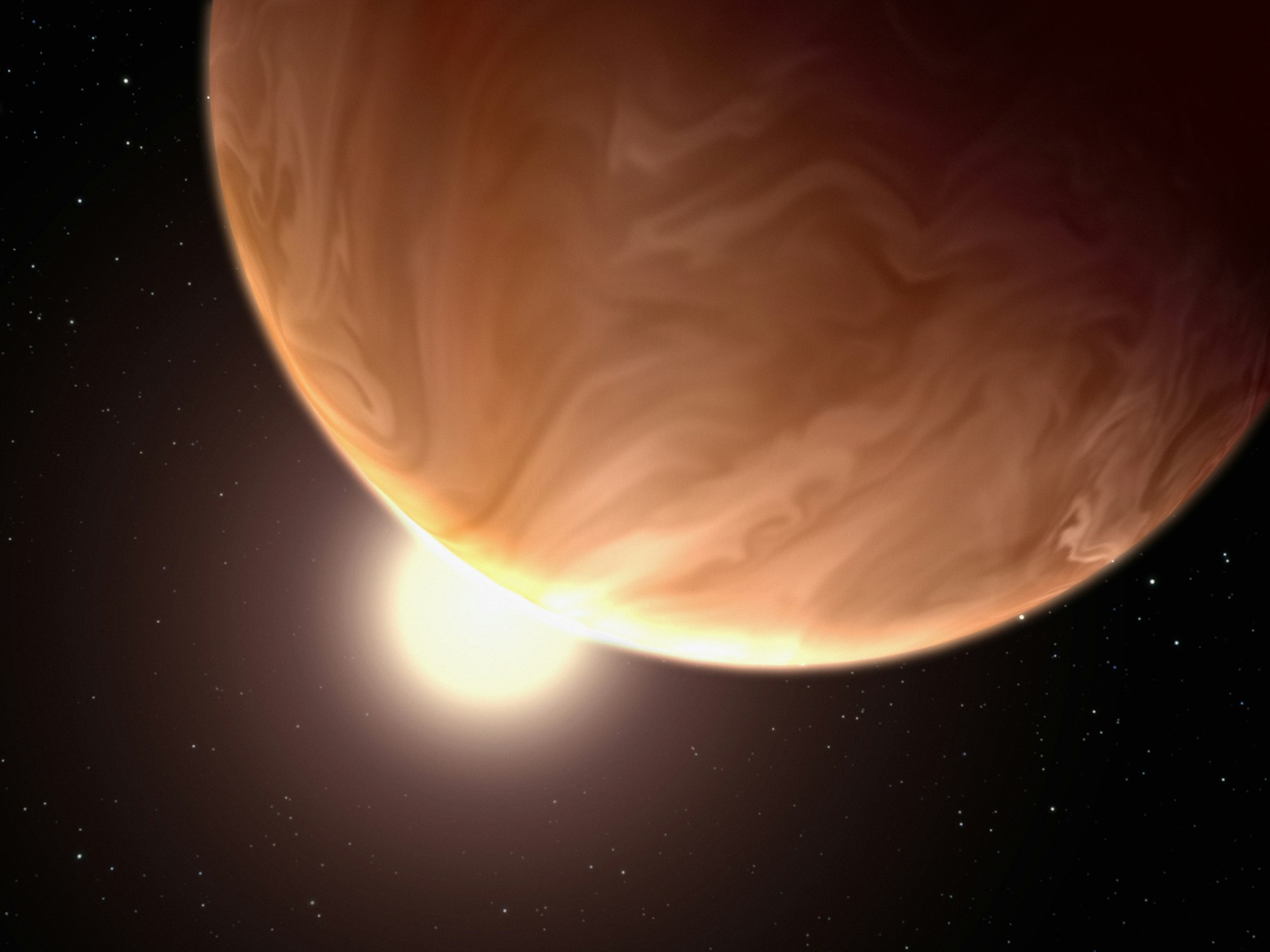
Earlier last month, the European Space Agency unveiled their Young Graduate Trainee Scheme for another year: a host of opportunities for aspiring students and young professionals, to spend time working at the agency for a year, on some of their various projects. This post is about one of those projects - the exoplanet surveying mission ARIEL, scheduled to launch in 2029: what it is, how it began, and why I can't wait for the opportunity to work on it!
If you haven't guessed already, I applied to the YGT scheme specifically to work on this mission - so when it came time to put together an application, I saw it necessary to do a full deep dive on the spacecraft itself - if you’re new to aerospace engineering, I’ll be doing my best to explain concepts as simply as possible!
So Where Did It All Start?
The European Space Agency is up there as one of the largest players in space exploration and scientific development - on, near and away from Earth. Founded in 1975, the agency has been up and running for a while, developing science and technology to better our understanding of the universe as a whole, through several means.
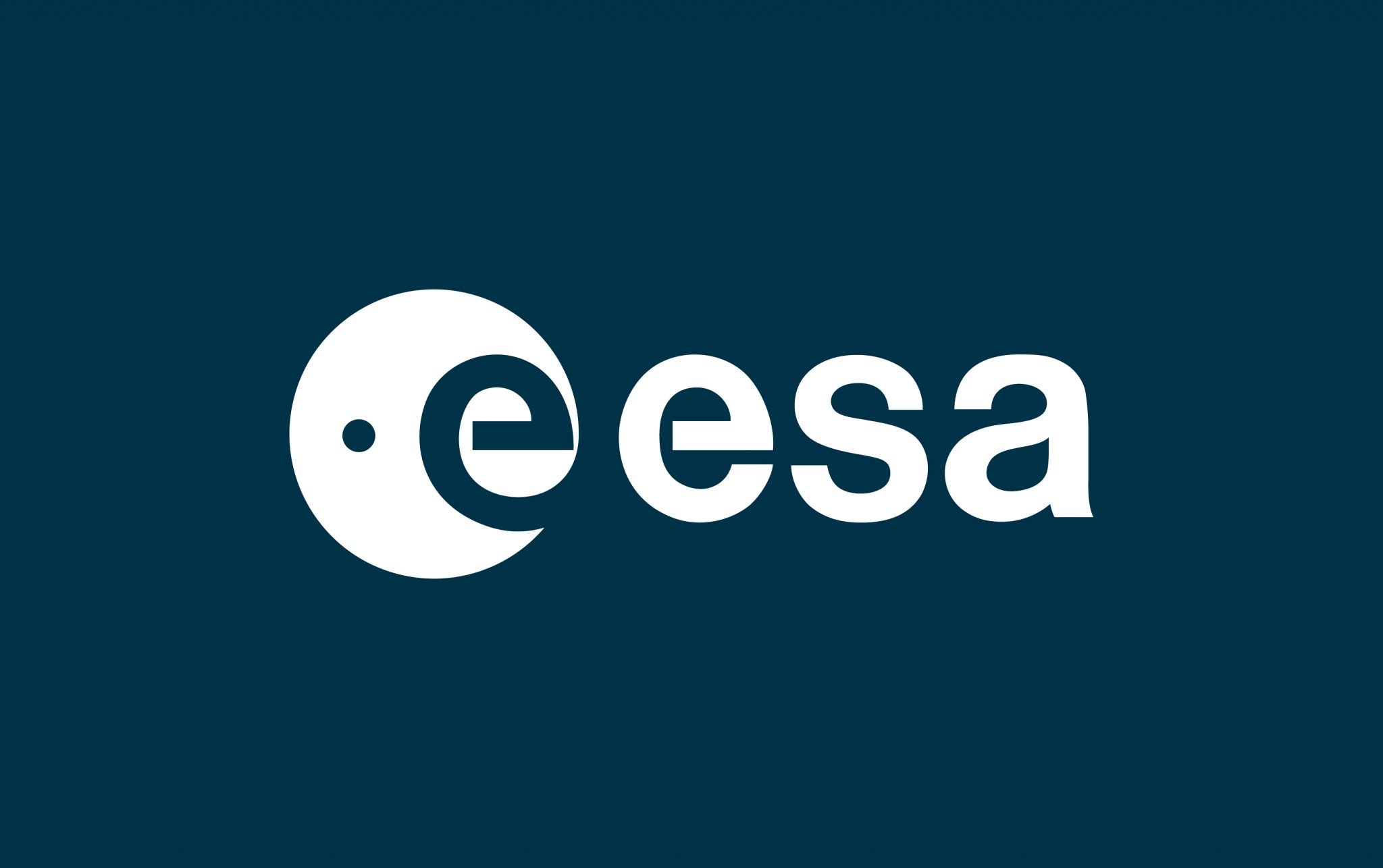
But the agency’s ‘Cosmic Vision’ their current planning cycle for their space science missions, from 2015 to 2025, lays out their core goals - the basis on which each of their science missions operate.
At the heart of the vision are 4 key questions, which every mission is designed to work towards:
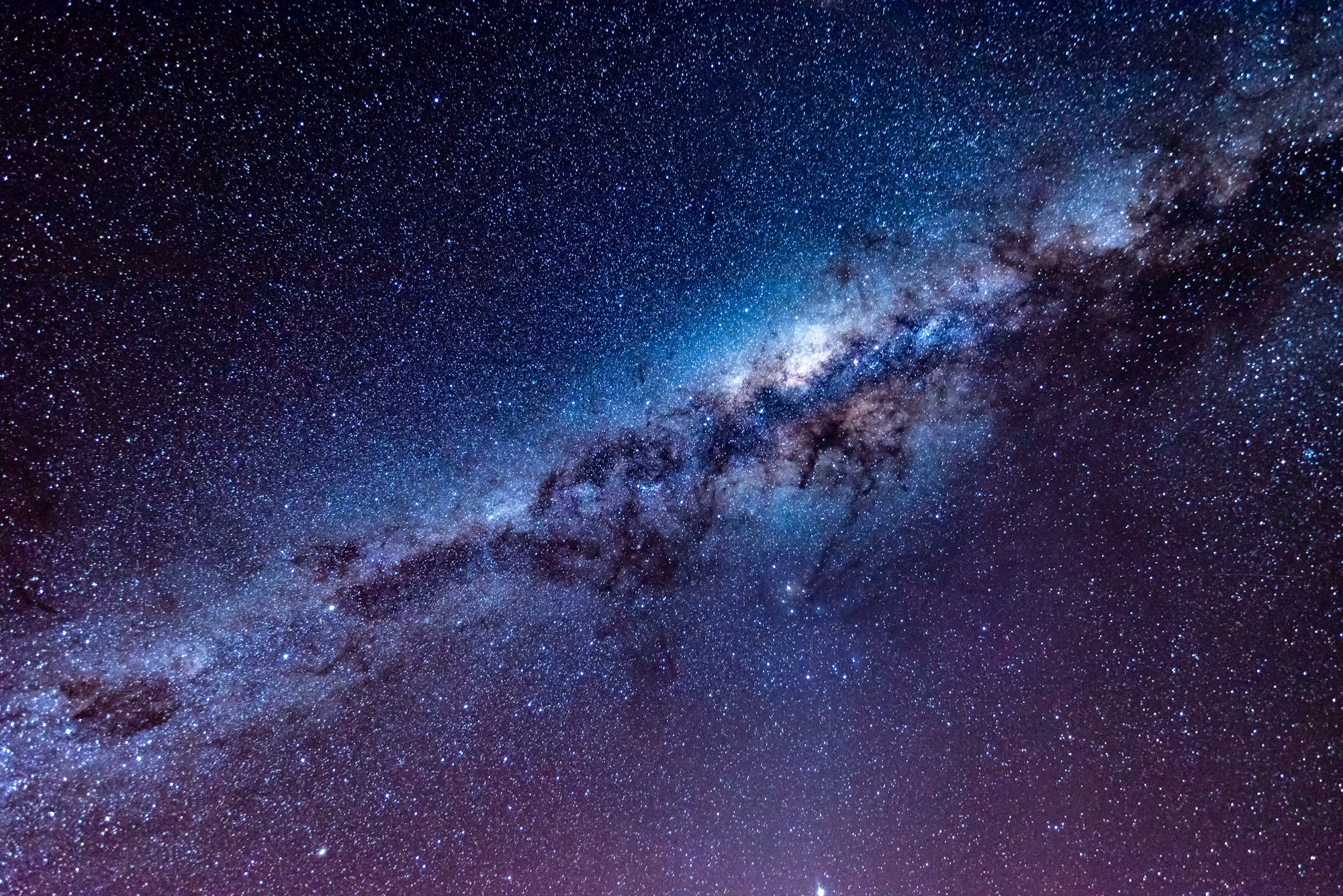
- How does the Solar System work?
- What are the fundamental physical laws of the Universe?
- How did the Universe originate and what is it made of?
- What are the conditions for planet formation and the emergence of life?
Whether it’s famous telescopes like Hubble or lesser known missions - each one is designed to tackle one or more of these questions.
The search for exoplanets (planets outside of our solar system) has been one of the agency’s big focuses for a while. Starting all the way from the 1990s with ground based observatories, the first discoveries of these exoplanets sparked curiosity in researchers, who opened up the field to begin posing the question of if it was possible to find planets beyond ours that could support life. Since then, missions like the Hubble Space Telescope and JWST were launched to continue pursuing and confirming those leads, along with further exploration of the universe as a whole - seeing beyond our small place in the Milky Way.
But even past those well known names in the space industry, lesser known and more focused missions were launched, specifically for the sole purpose of hunting down those exoplanets and learning more about them, including what conditions are needed for them to form, and life to begin.
That’s where ARIEL comes in!

The Big Three
The ESA currently leads 3 dedicated exoplanet satellite missions - each one tackling a different topic:

CHEOPS
Launched in 2019, the Characterising Exoplanet Satellite looks at the stars which host exoplanets (similar to our Sun) - specifically the stars that host exoplanets between the sizes of Earth and Neptune. Using what’s called the Transit method, by observing when and where a planet moves past their parent star, it can record the exact size of each planet - and combined with the measurements of its mass from other observatories, it can figure out each planet’s density and atmosphere - the first step to knowing what these worlds are like.
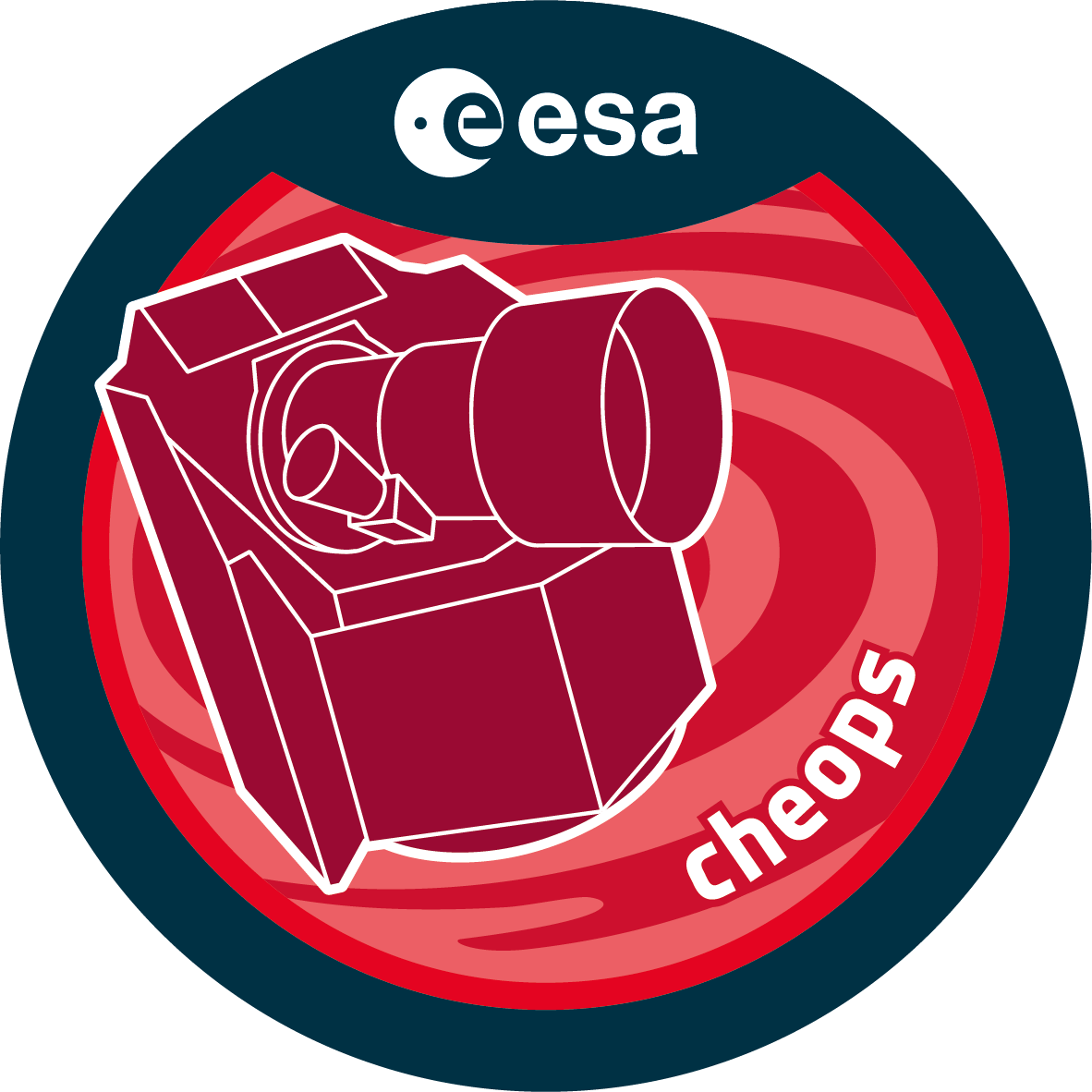
PLATO
Planned for 2026, the PLAnetary Transits and Oscillations of stars mission, has a direct focus on finding the properties of rocky planets in the habitable (Goldilocks) zone around stars like our sun - meaning, the zone where liquid water can form on the surface of a planet. This mission carries high hopes, scheduled to provide the largest array of Earth sized exoplanet records, telling us their sizes, masses, ages and orbit parameters, as well as their evolutionary states.
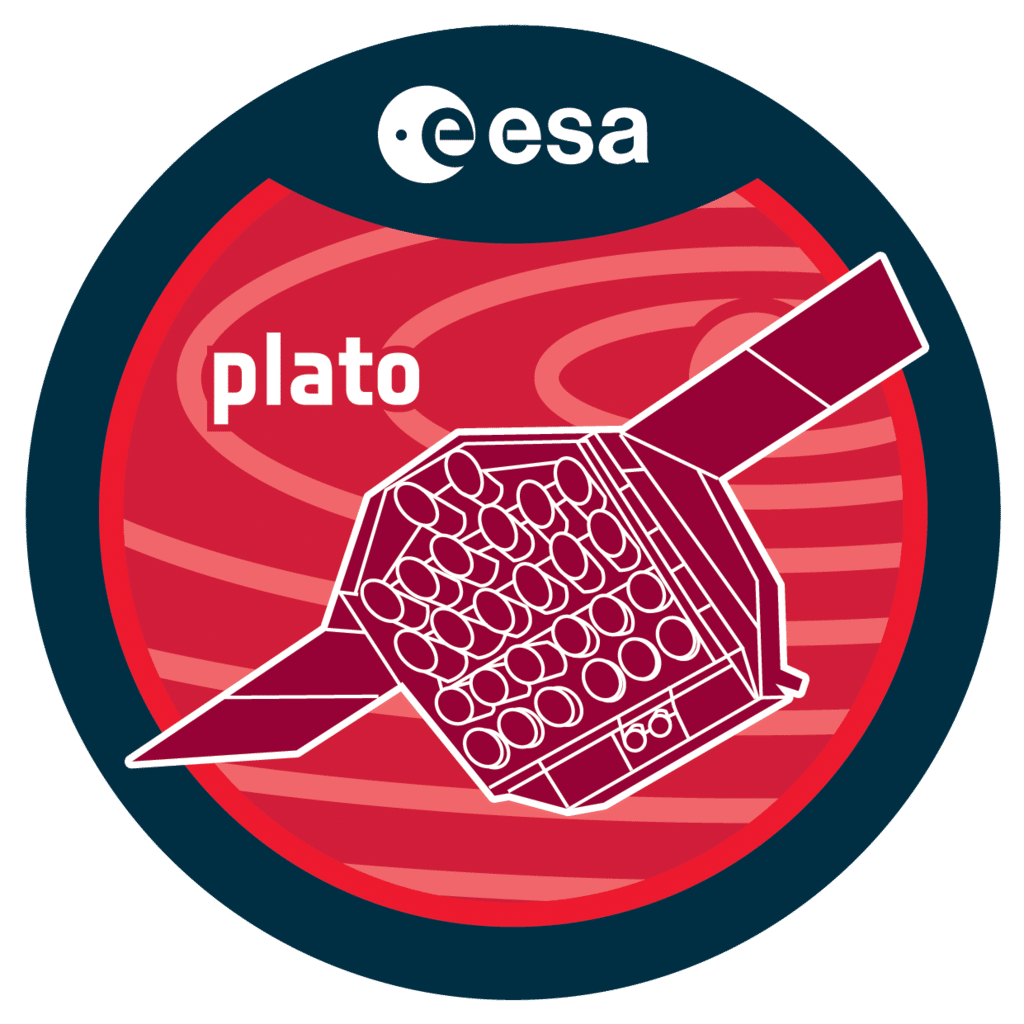
ARIEL
And finally - the mission this post was made for - the Atmospheric Remote-Sensing Infrared Exoplanet Large-survey mission (quite the mouthful to say, hence the acronym!) scheduled for 2029, will be designed to give the first ever chemical census of a variety of exoplanets (somewhere between 500 and 1000) - looking directly at their atmospheres in depth. With data from the spaceecraft, we’ll be able to see what the exoplanets are made of, as well as how they formed, and evolve.
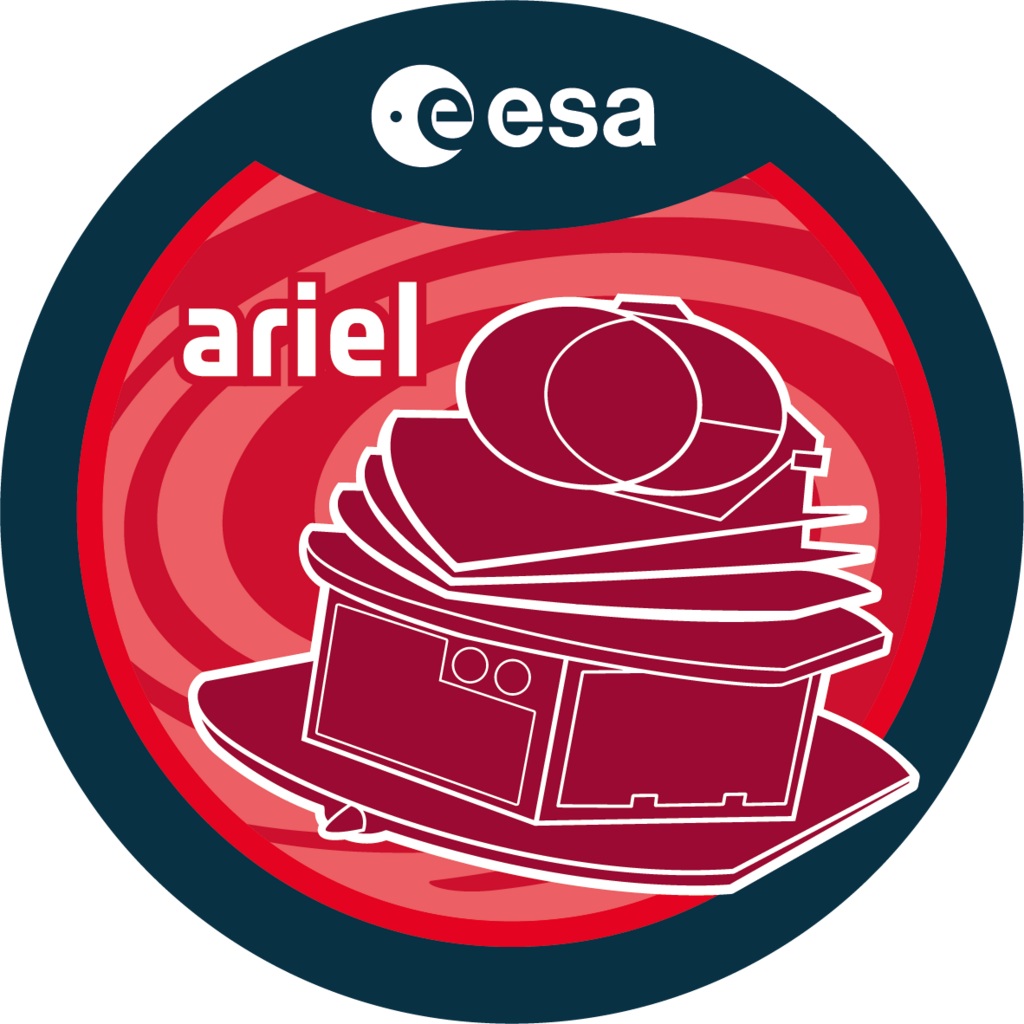
With these three missions, as well as the assistance of more general-purpose telescopes like JWST, and ground based observatories - our chances of finding even more exoplanets, including habitable ones, are extremely high. So whether we’re trying to understand how they form, their composition, or recording their presence for future exploration(!) every step forward benefits us as a species and our understanding of the universe.
ARIEL’s History

The ARIEL mission was selected in March 2018 (6 years ago!) as the 4th medium sized mission in the ESA Cosmic Vision Plan.
Proposed by the Ariel Mission Consortium - a group of over 50 institutions across 17 European countries, led by University College London (UCL), it beat 26 other proposals put forward to be the next mission in the programme.
After selection, it was adopted in 2020 and began development - a collaboration between ESA and the AMC that worked to provide the mission’s payload design and the instruments that would go on board, alongside Airbus (the Prime Contractor) NASA and other space agencies.
The mission is designated for launch in 5 years time (2029) on board an Ariane 62 launcher, for a planned mission of 4 years (which may be extended to 6).
Goals
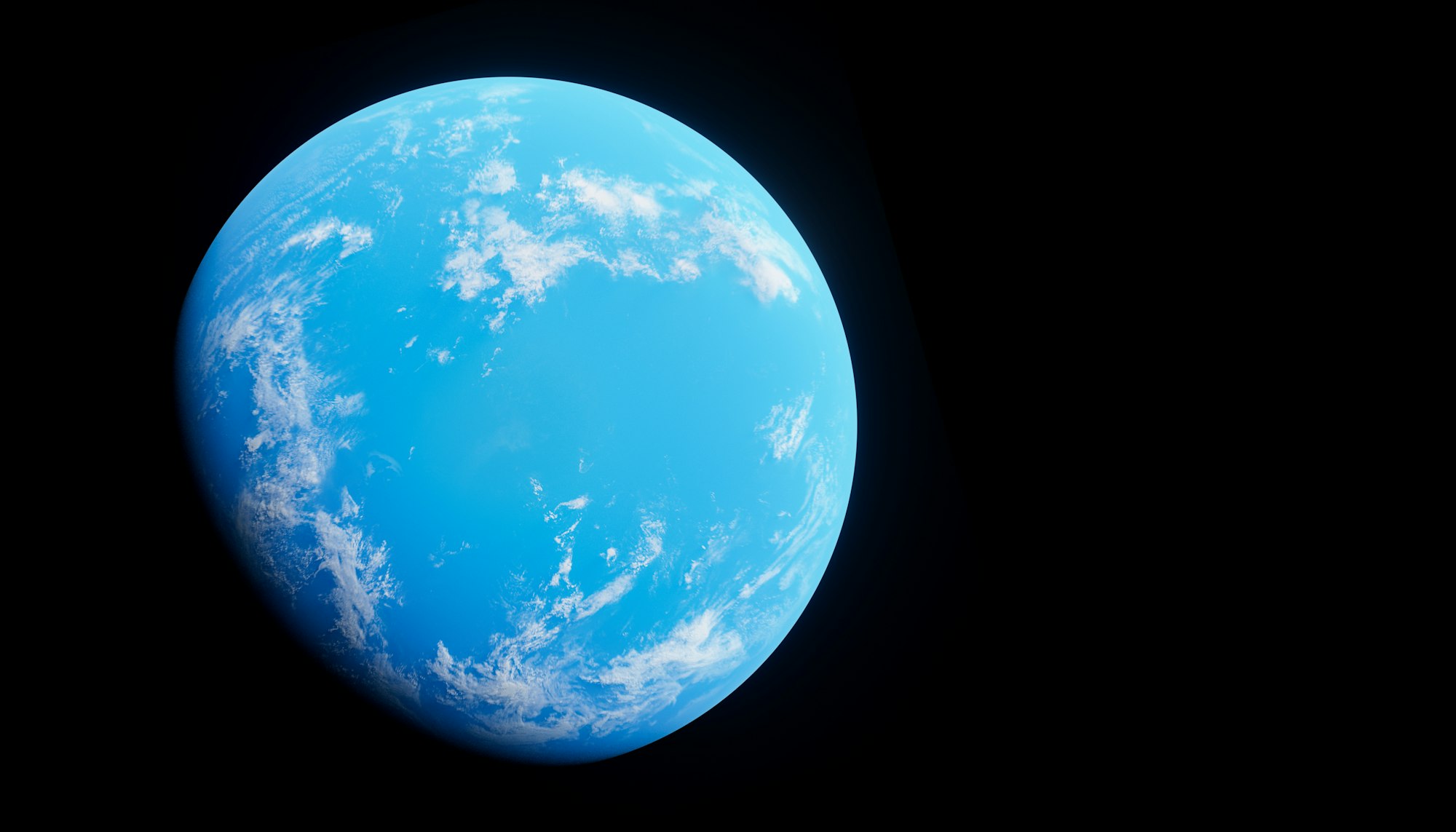
So - ARIEL is the first mission that's fully dedicated to specifically studying the atmospheric composition of exoplanets. But how will it actually do it?
Using a method called transit photometry and spectroscopy.
What is Spectroscopy?
Astronomers, engineers, scientists and academics of all sorts love to use long words to confuse people (see 'spaghettification'). Spectroscopy, in essence, is a way to look at the light we see from a planet or a star, and use info about it to learn more - what it's made of, how hot it is, things of that sort.
By splitting the light we receive from an exoplanet into different wavelengths (see Pink Floyd's Dark Side of the Moon album cover for reference - or just google dispersive prism) and then measuring that light, we can learn more.
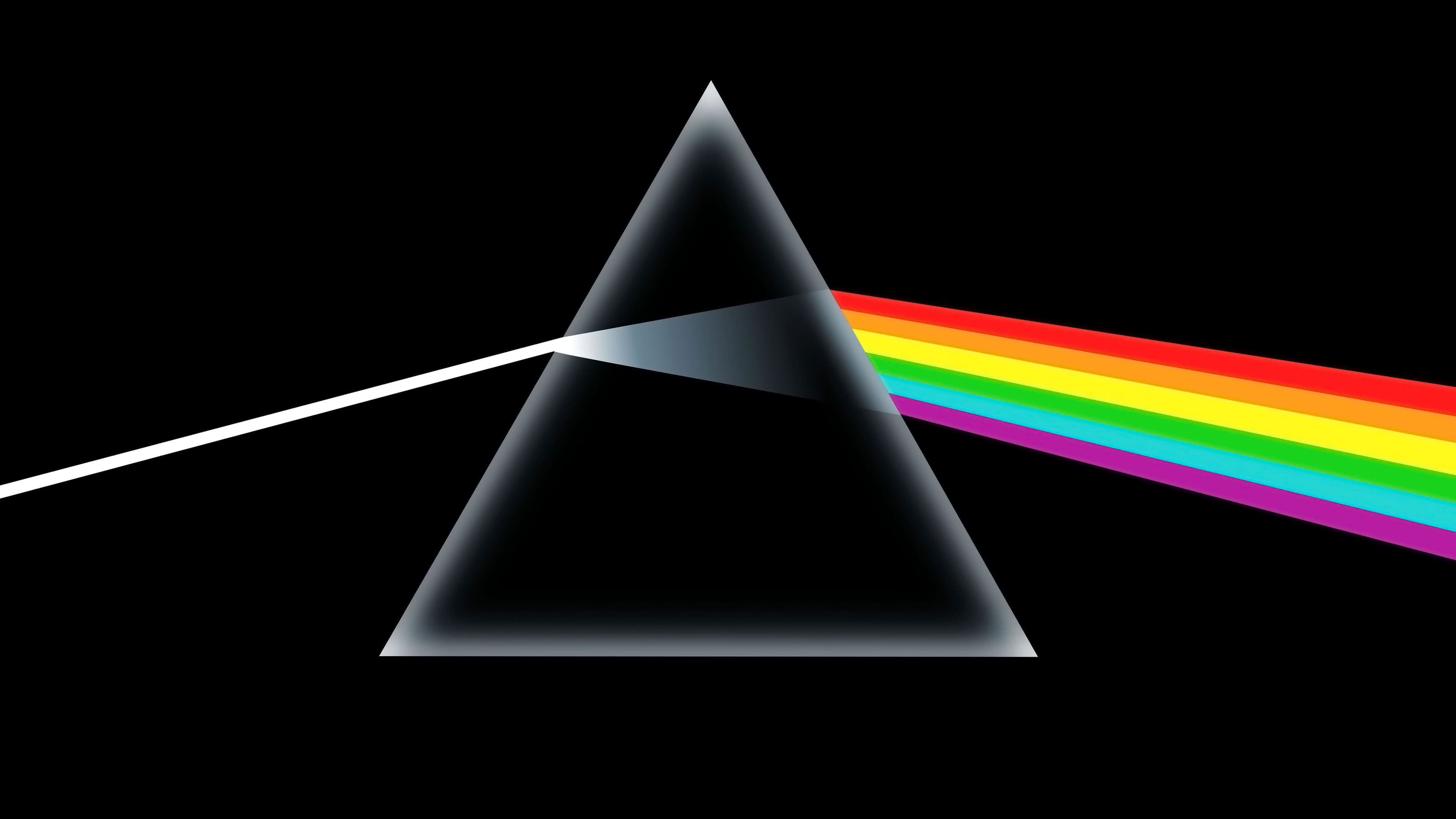
It's important to note, not all of the light we get from these exoplanets is visible. The I in ARIEL, which stands for Infra-red, is specific to the mission, since that's the wavelength band of non-visible light that's being measured.
Since some light from a planet gets absorbed at specific wavelengths, when it's leaving the outer layer of the planet, the spectrum we see has some places where light is ‘missing’; these regions are called absorption lines. And by looking at those specific lines, we can tell a lot about the atmosphere of the exoplanet.

Each element has a specific absorption and emission spectra - meaning if we match the patterns of what we measure from planets, to what we know already, we can guess the elements present in their atmospheres.

ARIEL measures infra red and visible light over the wavelength range 0.5 - 7.80 μm. So within just that small band, the mission is designed to infer a ton of information about the exoplanets it observes.
How will ARIEL use Spectroscopy?
Even within spectroscopy, there are a number of different methods for inferring information about exoplanets. Here are a few of them:

Transmission spectroscopy
When a planet passes in front of its parent star, the star dims slightly, and its light passes through the planet's atmosphere, changing its measured spectrum. By looking at this unique combination of light, we can gather more information.
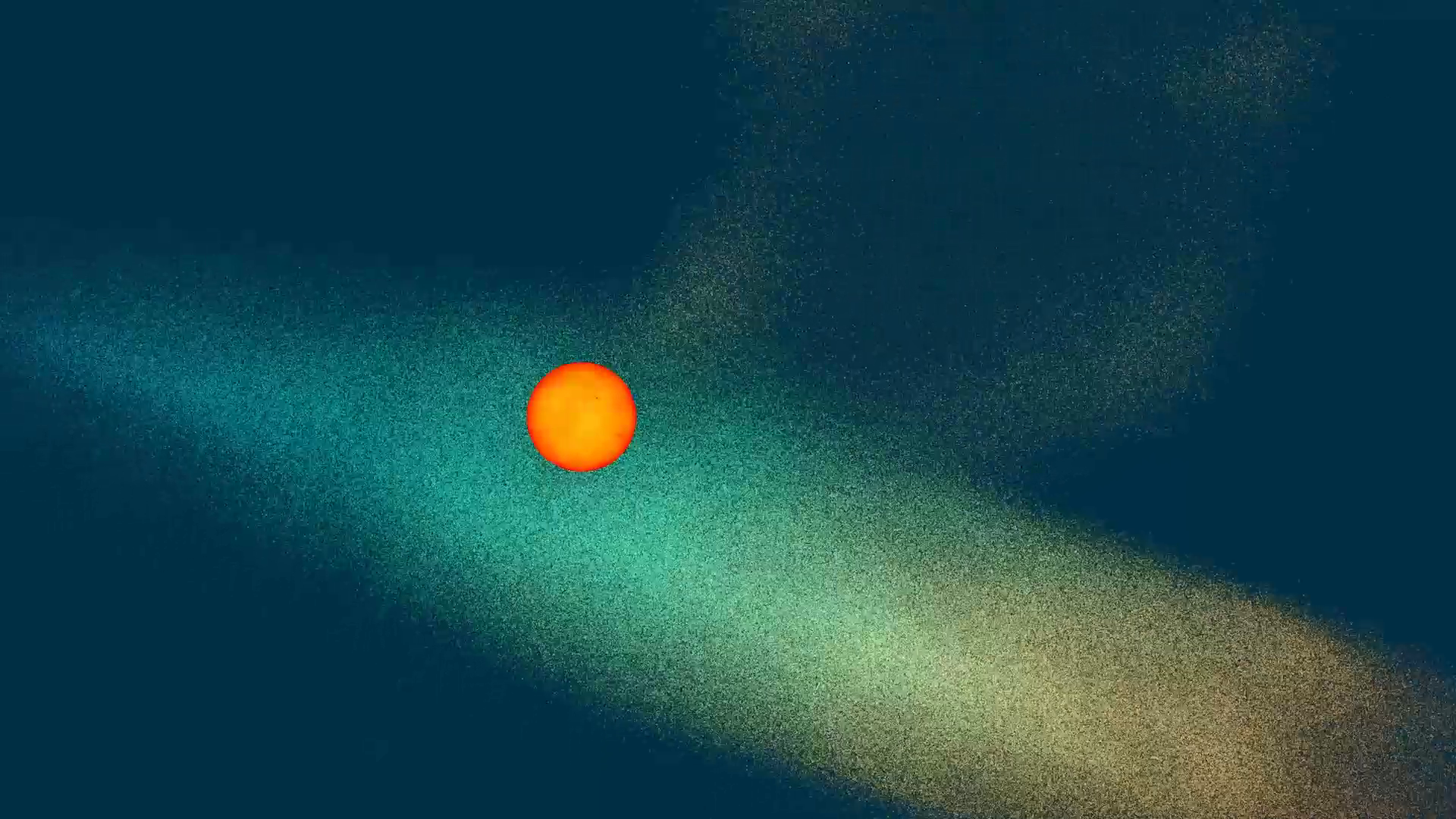
Eclipse spectroscopy
Similarly, when a planet is completely hidden behind its parent star, the spectrum received is just of the star itself.
Using these two methods in combination, and subtracting the eclipse spectrum from the transmission spectrum, astronomers can find the spectrum of just the planet's atmosphere.

Time evolution of atmospheres

ARIEL will look at each of these spectrums multiple times for a few planets - each time getting a different measurement. By tracking the changes with each pass, astronomers are able to tell how weather patterns change on those planets too.
The Engineering Behind the Science
So the goal is all well and good, and the scientific method is valid - but what does it take to actually get those measurements?
The Spacecraft
ARIEL is being designed to incorporate a ton of different components and instruments which are meant to allow it to function properly.
Based off of The EChO (Exoplanet Characterisation Observatory) a previously proposed mission that got beaten by PLATO in proposals, and with some carried-over designs from the Planck spacecraft (2009-2013) the body of ARIEL is split into two modules: a Service Module (SVM) and a Payload Module (PLM).
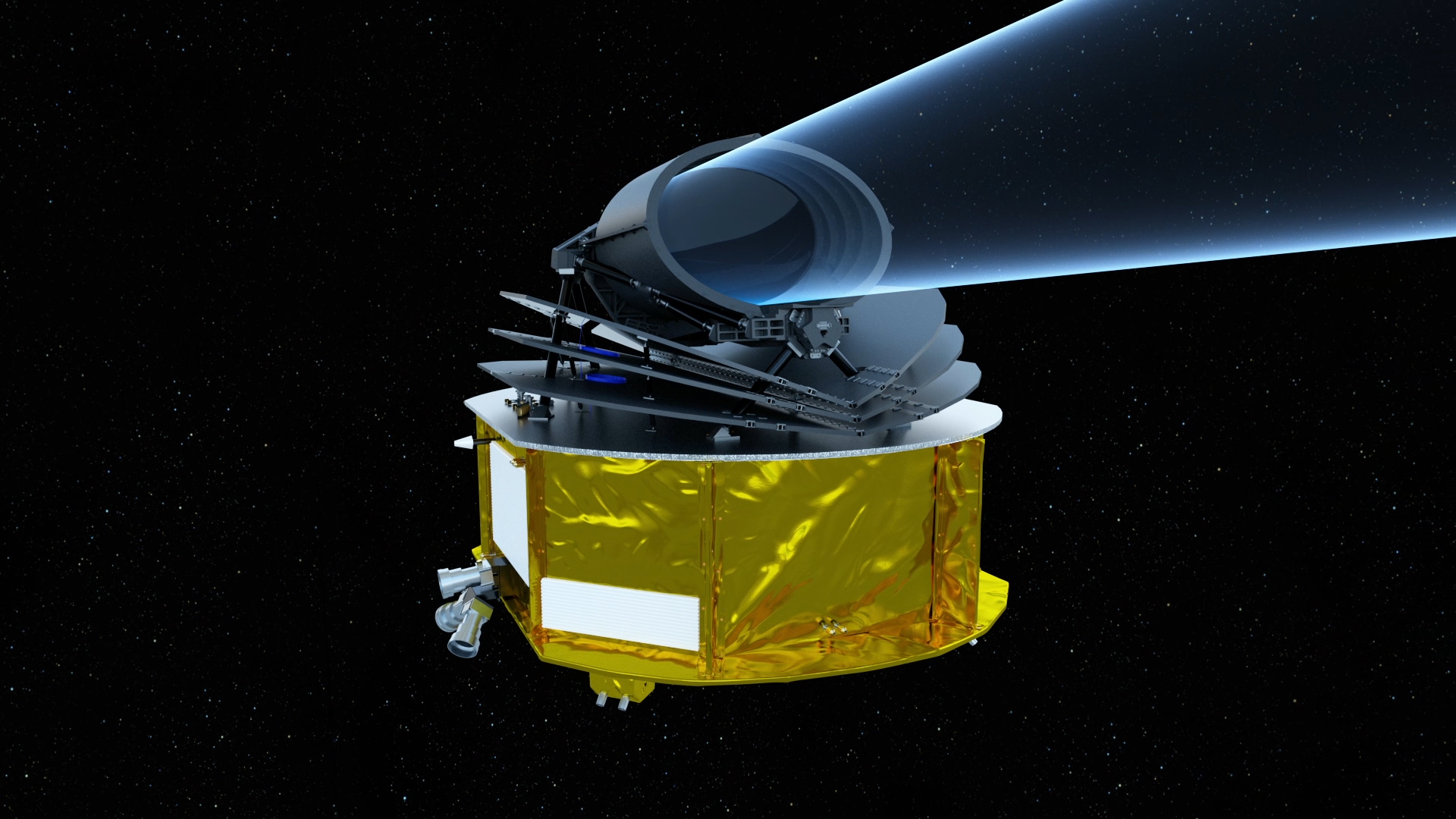
The SVM is the sandwich like structure seen above, which has 3 aluminium V grooves, and 3 pairs of low conductivity fibreglass bipod struts, which support the PLM - a basic horizontal telescope. At launch, the spacecraft will weigh around 1,300 kg (2,900 lb), and will have a dry mass of 1,000 kg.
The Payload
Ariel’s scientific payload is made up of a cryogenic telescope hosting two instruments: Ariel medium-resolution InfraRed Spectrometer (AIRS) and Fine Guidance System (FGS), along with the necessary supporting hardware and services. The telescope uses a primary mirror that's 1.1 x 0.7m in area, designed to acquire images in the visible and infra-red spectrum. To do that, and operate at the proper wavelengths, it has to be cooled to -218.2°C, or 55K.
With the Ariel medium-resolution InfraRed Spectrometer (AIRS) and the Fine Guidance System (FGS), the craft will be able to study the atmospheres of up to 1000 exoplanets. Plenty of chances for life!
Ariel medium-resolution InfraRed Spectrometer (AIRS)
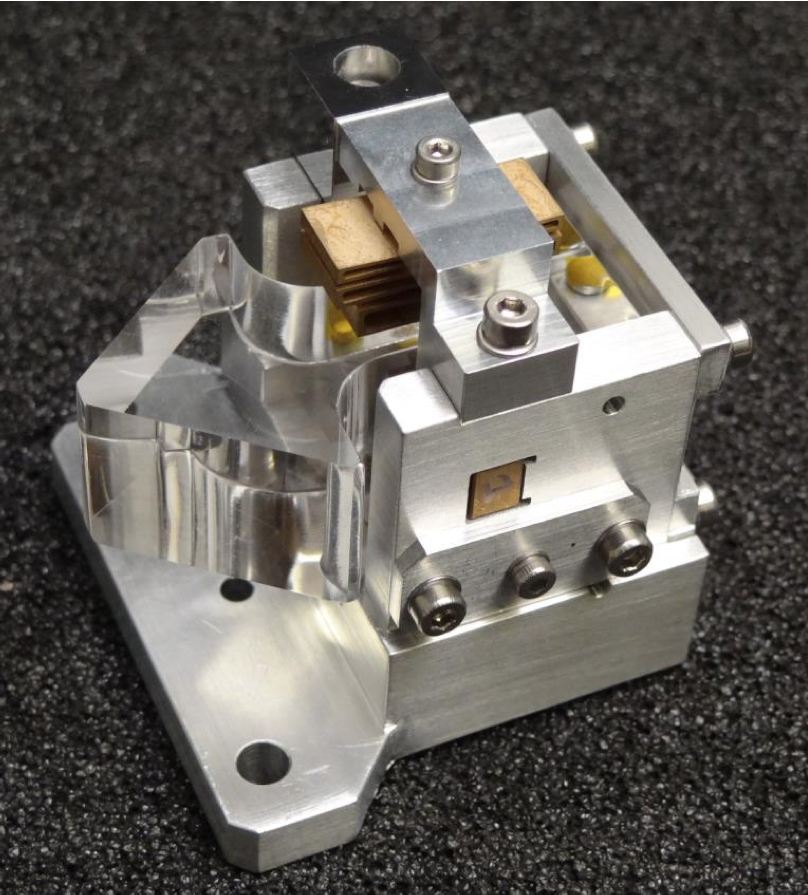
ARIEL's Infra Red Spectrometer is the main instrument that will do the measuring/studying of exoplanets. Sensitive to infrared light with wavelengths between 1.95 and 7.8 micrometres, it's perfect for studying atmospheres, since the atmospheric molecules leave spectrum traces at exactly those wavelengths.
As written on the ESA website:
AIRS consists of two channels with the same design. Channel 0 is sensitive to wavelengths of 1.95–3.9 micrometres and channel 1 to wavelengths of 3.9–7.8 micrometres. Each channel splits the incoming light from stars into its different wavelengths using a prism and has a camera to capture them. The two channels can be combined to observe the same objects across the entire range of the instrument.
Fine Guidance System (FGS)
While AIRS does the detection work, the FGS is designed to help ARIEL guide and centre itself to focus on the exoplanets it's measuring. It uses a camera and two fine guidance sensors that measure the relative positions of stars to help the craft gauge the direction it's pointing in. It also, surprisingly, includes a near-infrared spectrometer itself, which spans 1.1 to 1.95 micrometres. This is designed to work alongside AIRS and extend its spectroscopic range, allowing it to gather more data.
Progress Nowadays
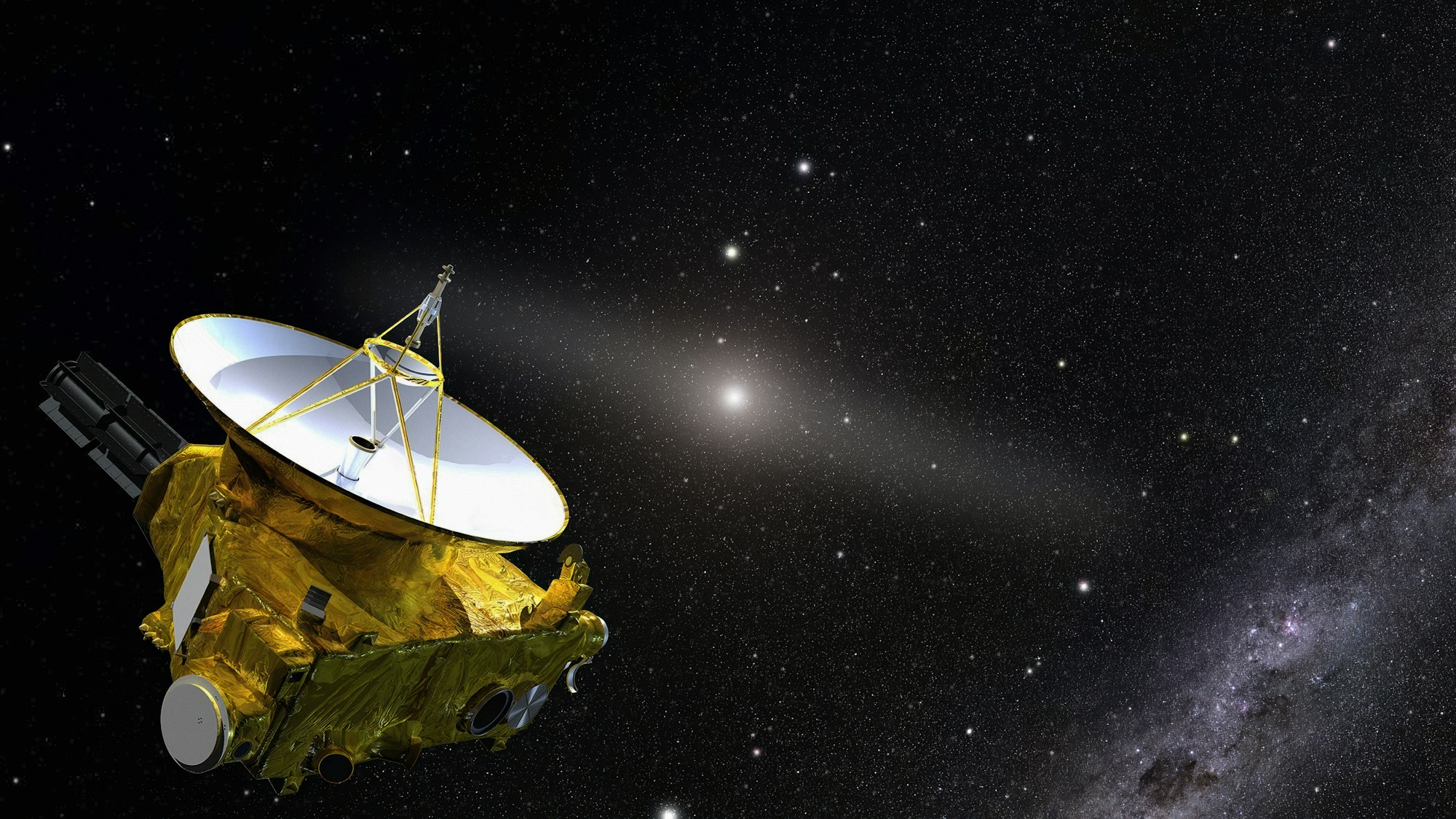
On the 5th December 2023, it was announced that ARIEL successfully passed its preliminary design phase and Payload PDR (preliminary design review) moving onto the construction phase. With a planned launch date 5 years from now, work began to move it forward through the spacecraft design phases.
The Ariel consortium payload team prepared 179 technical documents and addressed 364 questions (RIDs) for a panel of ESA experts, who evaluated the feasibility, performance, and robustness of the payload design. The review scrutinised every aspect of the proposed payload, to ensure that the designed systems meet the technical, scientific, and operational requirements of the mission. In May 2023 the ESA review board accepted that all the objectives had been completed, and confirmed the successful closure of the Ariel Payload PDR.
A Quick Run-through of Spacecraft Design Phases:
| Phase 0 | Mission analysis and identification |
|---|---|
| Phase A | Feasibility |
| Phase B | Preliminary Definition |
| Phase C | Detailed Definition |
| Phase D | Qualification and Production |
| Phase E | Utilisation |
| Phase F | Disposal |
Design phase B-C:
- Preparing system requirements and interfaces
- Defining subsystem and instrument design
- Reviewing preliminary mission schedule and costs
Development (Phase C)
- Building of the Structural and Thermal Model (STM)
- Building of the Engineering Model (EM)
- Testing both models using launch conditions (vibration/acoustic tests) to make sure they work properly, and environmental conditions (vacuum/temperature tests)
- Ensuring compatibility between the launcher and ground systemsthan those expected at lift-off.
Qualification and production (Phase D)
- Building the actual Flight Model (FM) of the spacecraft, which will go to space
- Testing electrical systems to make sure the signals are received/understood/communicated to the ground systems
- Checking the software to ensure it covers all the operating modes and flight procedures, and processes information correctly
- Testing navigation and pointing
- Transportation to the Launch Site
Summary
With the PDR out of the way, ARIEL was considered to be ready for payload CDR (critical design review) and manufacturing of its first prototype models - concluding preliminary design phase B2 of the mission, which lasted a whopping 19 months. This stuff takes time!
Regardless, I can't wait for the launch of the mission, as something I've learnt about before and researched so thoroughly now - and fingers crossed through the European Space Agency, I get the opportunity to contribute some of my own work to it!
Sources:
Home - ARIEL - Cosmos (esa.int)
ESA - UK leads new European exoplanet mission
Ariel Space Mission – European Space Agency M4 Mission (arielmission.space)
Systems Engineering Division (esa.int)
ESA - Ariel moves from drawing board to construction phase
ESA - Building and testing spacecraft
ESA - Exoplanet surveyor Ariel passes major milestone
ESA - Ariel's three key questions
ESA - Ariel moves from blueprint to reality
ESA - Airbus will build ESA’s Ariel exoplanet satellite
ESA Science & Technology - ARIEL
If you've read something on here and loved it, or want to read more, feel free to shoot me a message on my socials:
Instagram:
LinkedIn:
The feedback helps massively. Thanks!
